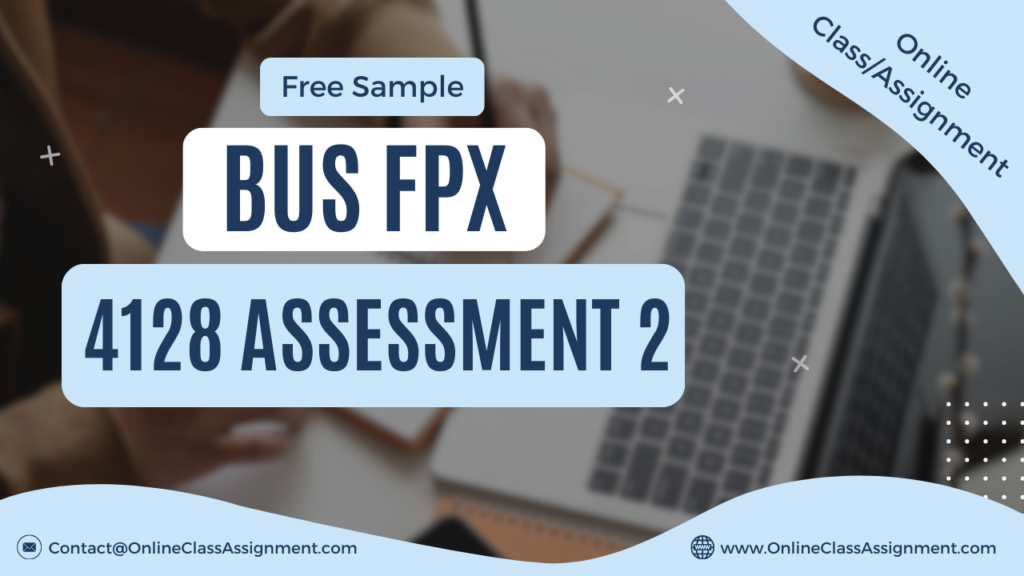
BUS FPX 4128 Assessment 2 Investigating the Need for Cognizance of Bias in Management
Student Name
Capella University
BUS-FPX4128 Cultural Competence in Health Care
Prof. Name
Date
Investigating the Significance of Recognizing Bias in Management
Biases are intrinsic to every individual, molded by varied experiences, beliefs, and education. Recognizing personal biases is essential for both personal development and professional advancement. This article explores the notion of personal bias, its ramifications for self-regulation and fair management in healthcare enterprises, and proposes managerial strategies to tackle biases, corroborated by the findings of an implicit bias assessment.
Types of Individual Implicit Bias
Personal implicit bias encompasses predispositions or stereotypes influencing one’s perceptions and behaviors. An illustration is inquisitiveness, fostering receptiveness to diverse concepts and encounters, crucial for leadership in navigating intricacies (Dillon & Bourke, 2016). Inquisitiveness nurtures empathy and links leaders with varied viewpoints, facilitating comprehensive decision-making (Deloitte, n.d.). Nurturing inquisitiveness enables leaders to adjust to evolving landscapes and advocate for organizational diversity.
Self-Regulation and Equity
Inquisitiveness correlates with self-regulation and equity in healthcare administration, highlighting adherence to regulations and impartial treatment (Dillon & Bourke, 2016). It is perceived as a constructive emotional-motivational mechanism, propelling exploration and adaptation (Leonard & Harvey, n.d.). Competent healthcare administrators possess problem-solving, communication, and strategic planning competencies, indispensable for navigating hurdles and uncertainties.
BUS FPX 4128 Assessment 2 Investigating the Need for Cognizance of Bias in Management
Recommended Measures
Healthcare administrators can alleviate personal implicit biases by promoting empathy, advocacy, and enlightenment. Empathy towards patients and personnel facilitates comprehension and addressing of their requirements, despite potential obstacles. Advocacy entails backing individuals and advocating for unbiased practices, ensuring impartial treatment. Enlightenment on unconscious bias fosters consciousness and nurtures an environment of parity.
Implicit Bias Assessment and Findings
The skin-tone Implicit Association Test (IAT) unveiled a marginal inclination towards light-skinned individuals, mirroring subconscious biases. Personal introspection uncovered biases potentially impacting interactions, notwithstanding diverse familial backgrounds. Awareness of implicit biases triggers self-reflection and guides future engagements.
Fresh Perspectives on Personal Implicit Bias
Revelations on personal implicit bias inform forthcoming management approaches, underscoring equitable treatment, prudent judgment, and mutual regard. Championing equality fosters a congenial work ambiance, mitigating conflicts stemming from biases. Encouraging mutual respect alleviates biased conduct, fostering inclusivity and cooperation.
Conclusion
Recognizing and remedying personal implicit biases is indispensable for fostering inclusive milieus. Leaders assume a pivotal role in cultivating awareness and advocating for equitable treatment. By nurturing comprehension and regard, managers can nurture bias-free workplaces, augmenting organizational efficacy and employee welfare.
References
Dillon, B., & Bourke, J. (2016). The six signature traits of inclusive leadership: Thriving in a diverse world. Deloitte University Press.
Deloitte. (n.d.). 6 Characteristics of Inclusive Leaders. Retrieved from https://deloitte.wsj.com/cio/2016/05/04/6-characteristics-of-inclusive-leaders/
BUS FPX 4128 Assessment 2 Investigating the Need for Cognizance of Bias in Management
Leonard, N. H., & Harvey, M. (n.d.). The Trait of Curiosity as a Predictor of Emotional Intelligence. Retrieved from http://citeseerx.ist.psu.edu/viewdoc/download?doi=10.1.1.554.26&rep=rep1&type=pdf
Get Capella University Free Business Samples
BUS FPX 3007
BUS FPX 3011
BUS FPX 3021
BUS FPX 3022
BUS FPX 3030
BUS FPX 3040
BUS FPX 3050
BUS FPX 4012
